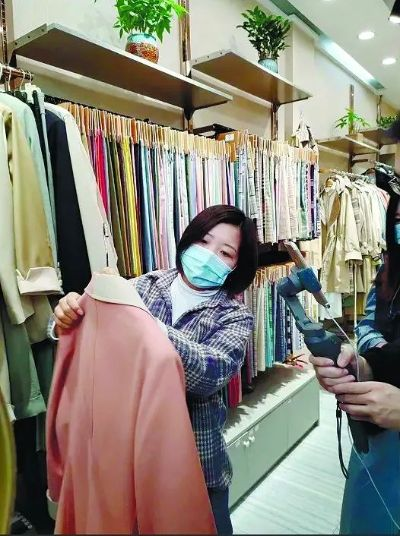The Impact of Smart Textiles on Sport Education and Performance
: The Impact of Smart Textiles on Sport Education and Performance,Abstract:,Smart textiles, a rapidly emerging technology in the sports industry, have the potential to significantly enhance both the educational experience and performance outcomes of athletes. By integrating sensors and biometric data tracking, smart textiles can provide real-time feedback and personalized training programs to athletes, improving their performance and reducing injury risks. This paper explores the impact of smart textiles on sport education and performance, highlighting the potential benefits for athletes and coaches alike.,Key Points:,1. Smart textiles offer unprecedented access to athletes' physiological data, allowing coaches to tailor training programs based on individual needs.,2. Real-time feedback from sensors can help athletes monitor their progress and identify areas for improvement, leading to better performance.,3. Personalized training programs can reduce the risk of injury by addressing specific weaknesses and enhancing strengths.,4. The integration of smart textiles into sports education can promote a more holistic approach to training, focusing not just on physical abilities but also on mental toughness and recovery strategies.,5. Despite the potential benefits, there are challenges associated with implementing smart textiles in the sports industry, including cost, data privacy concerns, and the need for standardization.
Introduction: In the realm of sports science, the integration of technology has been a driving force for innovation. One such area where technology is making significant strides is in the field of sport training and performance enhancement through smart textiles. These innovative materials are revolutionizing the way we approach physical education and athletic training by providing athletes with personalized feedback, real-time data analysis, and adaptive training programs. In this article, we will explore how smart textiles are transforming the way we approach sports education and performance, using an illustrative case study to demonstrate their impact.
Smart Textiles in Sports Training: Smart textiles, or "smart clothing", are designed to interact with electronic devices worn by athletes. These garments can monitor vital signs such as heart rate, temperature, and sweat levels, as well as provide feedback on motion and posture during exercise. By integrating these sensors into sportswear, coaches and trainers can gain valuable insights into an athlete's performance, injury risk, and recovery time.
For example, consider the case of professional soccer players who use smart shirts that monitor their heart rate and breathing patterns during matches. These data are then analyzed by coaches to identify areas where players need improvement, such as strength or endurance. Additionally, smart fabrics can also be used to create custom training programs based on an athlete's specific needs and goals.
Another application of smart textiles in sports training is the use of biometric sensors embedded in the fabric itself. These sensors can detect changes in muscle activity, joint angles, and even body position during exercises. This information can be used to optimize training routines and prevent injuries by identifying when an athlete is overexerting themselves.

Data Analysis and Real-Time Feedback: One of the key benefits of smart textiles is the ability to analyze and provide real-time feedback to athletes. This feedback can be tailored to individual needs, helping athletes make adjustments to their training methods and improve their performance. For example, if a swimmer notices that their stroke technique is not producing optimal results, they can receive immediate feedback from their smart swimsuit via a connected device.
The use of wearable technology in sports training has also opened up new possibilities for coaches to track athletes' progress over time. By collecting data on athlete performance, coaches can identify trends and patterns that can help them make more informed decisions about training schedules and strategies.
Adaptive Training Programs: Smart textiles can also be used to develop adaptive training programs that adjust to an athlete's changing needs and abilities. For example, a basketball player who is recovering from an injury may benefit from a program that focuses on strengthening their core muscles while still allowing them to participate in high-intensity games.
In addition to individualized training programs, smart textiles can also be used to monitor the overall health and well-being of a team. For example, a soccer team could use smart jerseys to monitor the players' heart rates and other vital signs during matches, allowing coaches to make adjustments to the team's strategy based on the players' current energy levels.
Case Study: One example of the impact of smart textiles in sports training is the use of smart jackets by professional cyclists. These jackets are equipped with sensors that measure heart rate, oxygen consumption, and other metrics during rides. The data collected by these sensors is then transmitted to a smartphone app that provides real-time feedback to the cyclist. This feedback can include suggestions for adjustments to the bike's settings or coaching tips for improving performance.
Conclusion: The integration of smart textiles into sports training has the potential to revolutionize the way we approach physical education and athletic performance. By providing athletes with personalized feedback, real-time data analysis, and adaptive training programs, smart textiles can help athletes reach their full potential while reducing the risk of injuries and promoting long-term health and wellness. As technology continues to advance, we can expect to see even more exciting developments in the field of sports science, powered by the power of smart textiles.
随着科技的飞速发展,智能纺织品已成为现代生活中不可或缺的一部分,它们不仅在日常生活中发挥着重要作用,也在体育教学中发挥着越来越重要的作用,本文将探讨智能纺织品在体育教学计划中的应用,并通过英文案例说明其优势和实施方法。
智能纺织品在体育教学计划中的重要性
- 提高教学效果:智能纺织品具有舒适、透气、易于操作等特点,能够提高学生的学习积极性和参与度,在体育课程中,智能运动服装能够根据学生的身体状况和运动需求进行个性化调整,从而提高教学效果。
- 促进个性化教学:智能纺织品可以根据学生的学习进度和兴趣爱好进行个性化推荐,从而更好地满足学生的个性化需求,这有助于提高学生的学习兴趣和积极性,促进个性化教学。
- 提升教学效率:智能纺织品可以通过数据分析和统计,实时监测学生的学习情况,从而及时调整教学策略,提高教学效率。
智能纺织品在体育教学计划中的具体应用案例

运动服装的选择与搭配
在体育教学中,选择合适的运动服装对于提高教学效果至关重要,某高校针对不同运动项目的需求,引入了智能运动服装品牌,为学生提供了个性化的运动服装选择,这些服装不仅舒适透气,而且可以根据学生的身体状况和运动需求进行个性化调整。
智能教学系统的应用
为了更好地实施智能纺织品在体育教学计划中,学校引入了智能教学系统,该系统可以通过数据分析,实时监测学生的学习情况,并根据学生的学习进度和兴趣爱好进行个性化推荐,该系统还可以提供多种体育教学资源,如视频教程、练习题等,帮助学生更好地掌握体育技能。
案例分析:智能纺织品在体育教学计划的实践效果
某高校通过引入智能纺织品在体育教学计划中,取得了显著的效果,学生在穿着舒适的运动服装进行体育训练时,能够更加专注于训练过程,从而提高训练效果,智能教学系统的应用,使得体育教学更加个性化、高效化,通过数据分析和统计,学校能够及时调整教学策略,进一步提高教学效果。
智能纺织品在体育教学计划中的实施方法
- 了解学生需求:在实施智能纺织品在体育教学计划之前,需要了解学生的需求和兴趣爱好,以便更好地满足学生的个性化需求。
- 选择合适的智能纺织品品牌:选择具有良好口碑和性能的智能纺织品品牌,以确保其质量和舒适度。
- 实施教学计划:根据学生的需求和兴趣爱好,制定个性化的体育教学计划,并利用智能纺织品进行实施。
- 监控与评估:通过数据分析和统计,实时监控学生的学习情况,并根据实际情况进行调整和改进,定期评估教学效果,以便及时发现问题并解决问题。
智能纺织品在体育教学计划中的应用与实践,不仅可以提高教学效果和教学质量,还可以促进个性化教学和提升教学效率,通过选择合适的智能纺织品品牌、实施个性化的体育教学计划、实时监控学生的学习情况等措施,可以更好地满足学生的个性化需求和提高教学效果,学校也需要不断探索和创新,以更好地适应科技发展的趋势。
Articles related to the knowledge points of this article:
The Journey of Ethical Textiles:A Case Study of 民裕纺织品
The Story of Ethical Textiles from Chongxian Brands
A Class of Textiles:The Fabric Revolution
Exploring the Market for Tianjins Local Textiles Online Prices



